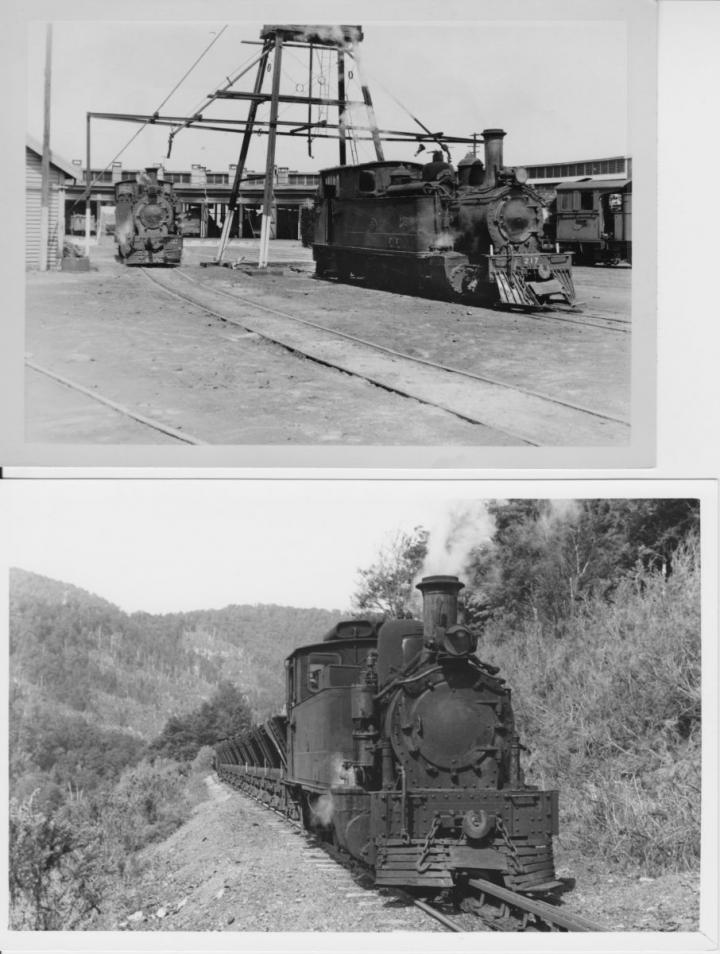Locos and rolling stock
Code 55 and 2-8-2's. Do they mix in N scale?
Hi MRH's
I am building a layout in N scale using ME code 55 flex and Fast Tracks #6 tournouts.The min radius is 16" with easements.Would either of these two locos have trouble with this?
A 2002 Kato 2-8-2 Heavy Mikado
or a 2012 Bachman Spectrum Light Mountain 2-8-2.
Any other comments about them, including fitting DCC and sound , would be most welcome.
Bryan

Seeking photos of small Colonial steam
I'm daydreaming again. That darn box of steam locos has my creative juices flowing over..
I'm inspired by this loco, from Russell Postlewaight's Up Black Creek on the Narrow Gauge thread:

I'm also quite fond of this little loco:
PRR boxcars
Dear friends, this is the first part of my model train roster about Pennsylvania Railroad (primarily) and others railroads.
In this topic I present the major common types of PRR boxcar (from top to bottom: X48 PS-1, X29, X26c USRA rebuilt, X26). The Pullman Standard -1 (X48 class for PRR) were used by Pennsylvania Railroad in only 20 units in the fifty years (my modeling era) but this boxcar type was very common among all other companies.
Free-wheeling locomotives?
When the motor and gears are removed, how freely do most steam locomotive wheels turn? Should the weight of the loco, when being pushed, be enough to turn the wheels and valve gear?
I'm asking because most n-gauge locos have the motor filling the cab, and I want to use that space for detailing on an HOn30 locomotive; I don't want the cab filled with a motor. The tender will be powered.
New motor
I picked up this motor on ebay. it says it's DCC ready. I believe that means it has the plug for a dcc module. My question is, will this run on my dc layout the way it is, without the dcc module installed?


Kadee coupler for those super-tight spots?
If you've ever tried to mount a Kadee coupler on the front of a steam locomotive, or on the rear of an F-unit, or in any of a number of other tight spots, you know it's sometimes impossible to fit the coupler and box in there and keep something close to a prototypical coupling distance. Usually, that means the coupler sticks out too far, or you have to resort to drastic measures like cutting off the rear of the coupler shank and drilling a new hole in the remaining shank stub.
But maybe there's a better way?
My latest model. DTI 50 foot Kadee box car
My latest freight car project is this Kadee 50 foot cushion frame box car. Thanks to fellow modeler Frank Jordan for turning me on to this one. Highball Graphics makes this decal set. F-243. Kadee offers the car in this 1965 paint scheme however the green is too new for my 1977 modeling era. I removed the lettering and re-painted the car using a more faded PC Jade green. Fallen Flags web site provided the prototype photo of the 18095.
Bob Rivard.

WP Caboose ladder/paint
Hello all. My first post here.
I'm planning on eventually building a layout based on the Western Pacific. In the interest of getting rolling stock done, I've started building a couple of cabooses. They are old Roundhouse kits of the exterior braced ones rebuilt from box cars. But the kits come with straight ladders, not the prototypical ones that included the curved connection to the roof at the top. They look like this:
To be or not to be (railroad identity crisis)
I'm facing a dilema because i'm building my first layout based on a fictional setting, because here on my country we dont have trains, so now that i've started looking at locos and rolling stock most are painted or have decals for a particular railroad.
what should i do? choose one railroad and stay with it? or can i choose rolling stock and locos without worring about that?
>> Posts index
Navigation
Journals/Blogs
Recent Blog posts:
